G
glibglobb
Guest
Original poster
The Subterranean Saga

The two intrepid elven warriors braved the darkened cave, their bright sabers lighting the way until they reached a nearly endless chasm where even the magical beams striking fourth from their swords faded to black. Elyridel peered down the vertical shaft descending into the very abyss itself. The abyss stared silently back and the brave knight felt his fingers sweating upon the pommel of his weapon. "I think it might be time to head home. Adventure is.... good and all but," he took a step back from the crumbling ledge, "I grow... hungry." His companion, the fearless she-elf Rysaria tossed her fire red hair as her laughter echoed across the cold stones. "Don't tell me you're afraid, brother?" "No... I'm... wait what was that..." Both elves swayed as the very stone itself shook and the blackness of the abyss began to move. A shadow grew, pulsing, out of the deep until it burst into their sword light, an unspeakable maw opening from the very depths of hell. Ringed by a hundred eyes, its cruel mandibles opened to another set of mandibles which opened to yet another set of mandibles which opened to a torturous and seemingly endless pink gut ringed with spines. The wurm, apparently deciding it wasn't hungry closed it's many mouths one after another and continued its ascent. The two elves watched the endless segmented length of the wurm pass for more than a minute until a pink stubby tail finally wriggled it's way up and into the dark. Rysaria turned a calm tear-streaked face to the frozen features of her brother, "...suddenly... I also grow hungry... shall we?" "...yes... and I hear Myurial is making her vegetable stew tonight... with capers..." "That sounds lovely..." "Doesn't it...." "No adventure to be had below ground anyway." "No, none." "Right..." They both took off running toward the surface, beautiful braids flying behind them.
Introduction
This is not your typical adventure story... well it is... sort of. There will be monsters, quests and treasure; camaraderie and romance, but the heroes will not be your familiar fat hobbits, agile elves and drunken dwarves. No, for this fantasy takes place deep underground, far from the light of day. Here in the deep dark where shadow rules and the sun is a myth, our story will unfold. Our characters will not be the shining figures of typical high fantasy, but the hard, pragmatic peoples of the deep who struggle each day just to survive in a world of countless horrors.
Inspiration
By now you might be thinking, "hey I've played Forgotten Realms and this sounds a lot like the underdark," and it is true this setting is inspired by Faerun's underdark, but I will be weaving in elements from many other sources, notably Norse Mythology, Lovecraft Mythos, and, of course, Jules Verne. In addition, the world contains a great many creations uniquely my own and nothing is merely copypasted. So yes, this setting will resemble the Underdark for those familiar with D&D but it is not a clone.
Underscape
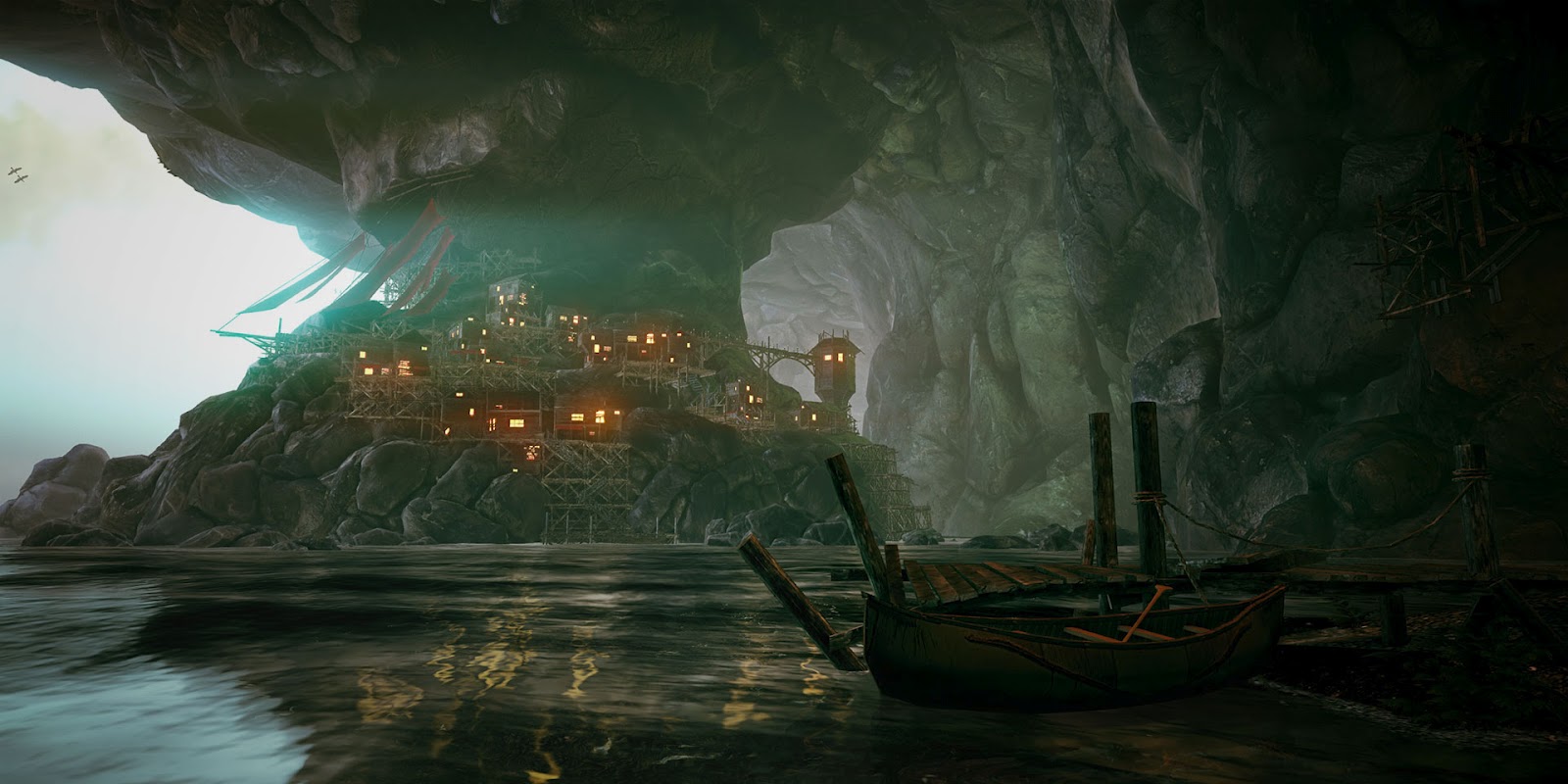

The creatures of the deep earth call their shadow stricken home by many names. Often it is called simply The Deep or Under Realm, though, in the deep-speech (the common tongue of the underfolk) it takes the formal name Urnoct (forever night). Much of the Deep's volume can be accounted for by solid stone, but through this stone, particularly limestone, run fissures and cracks, caves and caverns, even belowground rivers and lakes. These natural cave systems make up much of the habitable regions of the Deep affording shelter for fungi, insects, animals, ecosystems, and whole civilizations. Augmenting these eroded passages are those of biological origin. Bored by vast invertebrates called wurms, they take the shape of near perfect cylinders and lace the Deep like highways allowing fast, if slighly dangerous, passage for large caravans.
In addition to natural caves and wurm burrows, the Deep is home to innumerable sunken civilizations, some like the empty fortresses of forgotten dwarf clans were built underground while others were buried by disaster or the slow march of time. With few exceptions, these ruins rarely play host to their original occupants, but rather primitive Deep creatures who take up residence like rats in an abandoned cellar.
At the deepest reaches of the Deep, below the oldest ruins, beneath the still waters of the vast Undersea, and below even the mythical crystal forests, where temperatures rise to hellish extremes, lies a realm known as the Abyss. Rumored to be a gateway to hell itself, it is a scorched realm of magma rivers and scalding geysers. Little is known about this place or the creatures who live here, but tales speak of demons and worse prowling the searing depths. Needless to say, few even among the hardy denizens of Urnoct dare venture here.
Races
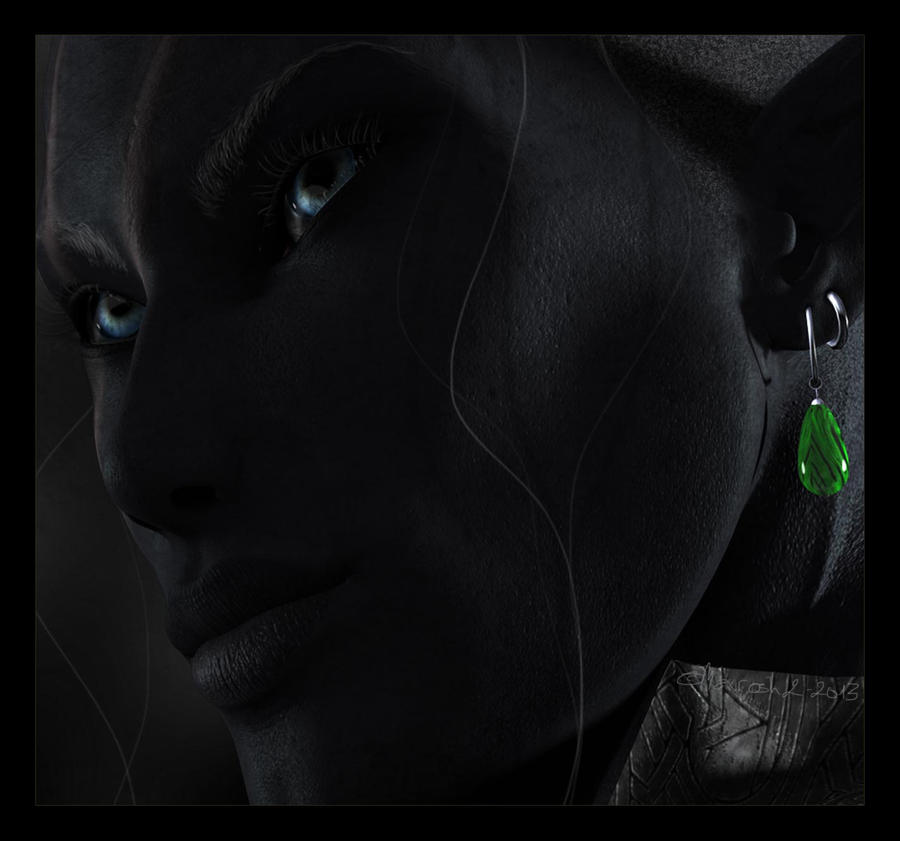

At the outset, five main races (plus surfacers) will be available for play. More races may become available as the game progresses. I will only allow one or two topsiders, depending on the size of the group, and they can be crafted from your standard fair of high fantasy folk. If people have additional races they would like to see implemented I am open to suggestions, but hold the final unapologetic veto on what will be allowed.
Dark Elves (Svardalfar) - Dark Elves labor under a poor reputation for their above ground cousins have taken to blaming every disappearance and ill turn of events upon their subterranean kin. In truth, the Dark Elves are among the most benevolent and just nations within the Deep. They might even be called noble were they not so insufferably arrogant as a rule. According to the misogynistic elf-kings of the surface, the Queens who rule the Dark Elves are a sadistic cult of power-mad sorceresses. In reality, Dark Elf females, their queens included, prefer the martial arts over the arcane, practicing their sacred technique, the Nocturn or Shadowstep from the day of their birth. Some even go so far in this practice as to ritually blind themselves and all, even initiates, train with their eyes shut, developing their other senses to preternatural heights as a result. Dark Elves follow their own pantheon of Goddesses and Gods, chief among them Nystara, mistress of shadow, and her consort Gendall, the candle-bearer. Far from promoting evil and mischief, however, Nystara is a goddess of love and compassion teaching the succor of shadow and the art of killing quickly and mercifully when the need inevitably arises. Dark Elf civilization is centered upon the Undersea where their capital Blackwater sits, a great port marked by the violet glow of its eternal lighthouse. From the Undersea, Dark Elf rule spreads out through a feudal, matriarchal hierarchy ranging from the Black Queen herself down to the Mistresses who administer major cities and the Dark Ladies who oversee the outlying fiefdoms. Lacking a traditional army, the Svardalfar rely on the monastic order of the Nocturn to assassinate their enemies, avoiding protracted battles and striking the rulers of nations rather than the ranks of their armies. Although it might seem to outsiders that Dark Elf society must be misandrist and oppressive, most men are content, seeing leadership much the way surface men see cooking and cleaning, as women's work. Instead, male Dark Elves willingly gravitate to scholarly and arcane professions, dominating the ranks of the Deeps premier school of wizardry, Blacklight Academy. In appearance, the Svardalfar are as lithe, though, not as tall as their surface kin. Their skin ranges from black to pale blue, their hair always monochrome can be black as night, white as starlight or anywhere in between.
Gnomes- Located within the bowels of the largest cavern beyond the undersea sits a city that lives, a city which is never the same twice, where doors vanish, bridges swivel and buildings themselves get up and walk on creaking mechanical legs. That city is Mechanus, the clockwork capital of the Gnomish nation and one of the great powers of Urnoct. Gnomes are in many ways the complete opposite of their Dark Elf neighbors. While the Svardalfar are slim and beautiful, gnomes are short, plump, big nosed, and only very rarely cute. Unique among the peoples of the world, gnomes not only disdain magic but are incapable of casting even the simplest spell without disaster. According to myth ancient gnomes traded their ability to weave magic for their ability to build it and since that day a gnomish cantrip is as likely to turn its caster inside out as produce a scarf from a sleeve. Instead of arcane magic, gnomes practice an art sometimes called technomagic by outsiders. Gnomes scoff at such terms and respectably dubb their mechanical art, science. Gnomes themselves stand around three feet and are notable for their large noses (an object of pride for any gnome) and oddly colorful hair. Some say the rainbow hues of gnome hair is the result of their magical brains dying the follicles rooted in their scalp, but none can be sure. In personality gnomes are quixotic, energetic, and curious to a fault. Not well thought of outside the bounds of their complex bureaucratic state, gnome industry has been blamed for everything from cave-ins, to aetheric pollution (clouds of wild magic found frequently in the Deep). Gnomes, of course, deny all these accusations as they continue their high-paced, high-tech lifestyle.
Eidelon- Not all civilizations die when they crumble into the deep. A few survive, mostly as undead ghouls haunting their impromptu tomes. The Eidelon are the exception. The heirs of a vast empire which once ruled all the surface through powerful spellcraft, their arrogance lead to their own downfall. A ritual meant to assure their dominance for all time by granting them the immortality and omniscience of Gods instead backfired. Apparently, the Gods do not consider imitation to be a form of flattery and smote the cities of the Eidelon with a series of natural disasters before the ritual could be completed. Altered, but not deified, the survivors fled to their deepest sanctums and were swallowed by the earth never to be seen again... at least not on the surface. Deep beneath the ground the few surviving Eidelon struggled to rebuild their nation, but the harsh denizens of Urnoct afforded them little peace. In the ruins of Orobus, their once great capitol, the descendants of the Eidelon still struggle to rebuild their legacy. Though once human, millenia spent in the endless dark have changed them, draining the color from their skin and replacing the light in their intelligent eyes with a pale blue veneer. The ritual, never completed, also changed the Eidelon, and though lacking immortality their minds are greatly expanded beyond ordinary mortals. All Eidelon possess eidetic memories retaining every fact and skill they acquire in flawless detail. In addition, most Eidelon develop psychic abilities, most commonly telepathy but occasionally precognition. The Eidelon have continued their practice of magic but now focus on divination and pure force (telekinesis) over the crude manipulation of energy and elements. In glowing magic crystals they hoard information intent on acquiring the knowledge of the Gods despite being denied their power and immortality.
Goblins- It is said that the only thing which comes in more flavors than elven tea is goblins. Known both on the surface and below it, the Goblin horde, as diverse and revolting as a swarm of mutant rodents, scurries endlessly across the Deep in search of new resources to pillage. A primitive tribal civilization, the Goblins are ruled by War Chiefs backed by spooky shamans whose magic is more tricks and superstition than real spellcraft. They worship an entire brouhaha of sinister, wicked, and immortally nasty Gods with unpronounceable names like Glibtoginkook and Hzniferjableeble, though the lack of goblin clerics makes many wonder if these deities even exist. Though weak as single combatants (the average goblin is shorter even than a gnome and much scrawnier), in vast numbers they attain all the force and fury of a locust plague. A plague they are too, for goblins are not sedentary but rather roving marauders. Once they use up their resources, killing and devouring everything they can get their grubby hands on, up to and including wurms, they simply move on to another area. The Dark Elves, who loathe goblins in the extreme, go so far as to compare their life cycle to humans. Within the ranks of the horde there are many stations often mistaken as whole different races. They go by familiar names: Orcs who are soldiers, Hobgoblins who are scouts, Gremlins who are insane but occasionally ingenius inventors. The term goblin, though applied to all the race's warped manifestations, is specific only to the most common caste of runty workers who make up the bulk of the horde. The source of all this variety remains a mystery for all captured goblins prove under examination to be sexless. Theories abound to explain this paradox ranging from baby goblins bursting from the chests of their victims, a disfigured replica of the corpse that birthed them, from speculations about Goblin Matriarchs who breed the rest of their kind the way a Queen Ant does her brood. Some even assert that Goblins spring from holes in the ground but that is, of course, preposterous. Individual goblins mostly stay with the bulk of the horde, but occasionally loners or companies split off becoming slavers, mercenary bands, thieves and even merchants. Still, when presented with the pheromones of a horde on the march they may suddenly drop their old lives and return to merge with the roving, roiling mass of warty green flesh.
Trolls- Trolls are yet another subterranean race tainted by surface stories. Cast as savage monsters and stupid brutes, trolls are in fact a culture steeped in honor and tradition. Divided along family lines into clans, trolls live the nomadic life of simple huntergatherers following the wild isopod herds as they migrate through the cavern systems of the deep. Standing at over eight foot tall on average and clad in bulging muscles, it can be understood why trolls are mistaken for brutes. Adding to their intimidating demeanor are their horns which range from the short prongs of females to the long curving racks of aged warriors. In general shape trolls remain humanoid, though, the males sport more abundant hair than human or even a dwarf, culminating in large manes which envelop the neck and shoulders. The color of their skin and hair varies with climate. In the north where stone passages give way to icy crevasses the Frost Trolls sport snow white manes and pallid blue skin while in more temperate zones Cave Trolls grow black to gray hair over dark skin similar in shade to their elven neighbors. As a people Trolls are obsessed with honor, strength and tradition, easily offended and even more easily roused they've earned a reputation as berserkers throughout the Deep and beyond. Although the Svardalfar hold treaties with the Troll Clans and employ many of their kin as mercenaries, the Gnomes have long been in conflict with them, a conflict which occasionally broils into open war. The Trolls claim, correctly in many cases, that Gnomish industry pollutes and damages their cherished hunting grounds while the Gnomes still remember a time in antiquity when Trolls hunted them as well. Troll religion is more shamanistic and less orderly than the faiths of the dark elves. They venerate the spirits of stone and ice as well as the wurms who they see as divine emissaries and caretakers. The stag beetles, massive antlered insects which carry supplies, as well as Troll warriors when they ride to battle, also hold a place of reverence in their culture. Of all the myths swirling about trolls: that light turns them to stone, that they can smell the blood of the devout, only one is completely accurate: trolls regenerate. Only fire (or decapitation) can permanently damage a troll, often leaving grizzly scars if not outright killing them. For this reason trolls despise fire (as well as the wizards they associate with its conjuring) and ban it from their camps relying instead on bioluminescent fungi to light their way.
Topsiders- There is a word for a topsider in Urnoct: corpse. The saying is rooted in truth for the average surfacer, even the most harrowed warrior, is rarely prepared for the horrific dangers which are commonplace in the Deep. Sadly most topsiders who reach the Deep do so as slaves. The Eidelon, Goblin, Troll and Dark Elves all condone the practice, though they practice it in radically different ways. Among the Goblin a slave is typically a meal on wheels and lasts only until its owner is hungry. Some goblin arenas exist where captured slaves are pitted against one another beneath rusted steel cages, but here too lifespans are brutal and short. Trolls keep slaves for far more carnal reasons, war chiefs often measuring the status of one another by the diversity of their harems. Once Trolls kept slaves as goblins still do, as mobile meat, however, in recent centuries that practice has fallen out of favor. The Eidelon who dwell in the deepest quarters of Urnoct receive their slaves indirectly through trade with neighbors, but what they desire does not lie in the muscles of their property but in their minds. The Eidelon have ways of extracting information and adding it to their ever-expanding crystalline data stores. The slave trade is simply a convenient means of doing so. The shells which remain after this process, mindless yet living zombies, continue to serve their Masters as a thoughtless class of laborers called Hollow Ones. For the Dark Elves slavery is more ritualized and codified in law. Only certain races are legal to enslave, namely those which make their home on the topside and have made war on the Svardalfar in the past, notably humans and elves. Law also restricts the treatment of slaves mandating minimum work hours and forbidding torture and other sadistic means of motivation. In fact, the lives of Dark Elf slaves are often so comfortable compared to the life of the average surface peasant that many choose to remain with their mistresses even after having been granted their freedom. Gnomes, in addition to abhoring slavery as a scourge of free enterprise, disdain topsiders particularly 'big-folk' or 'clods' who they claim are ugly, smelly, and clumsy enough to wreck any experiment. They rarely even allow topsiders into the outskirts of their settlements not to speak of Mechanus itself in all it's ratcheting and whirring glory.
Dwarves
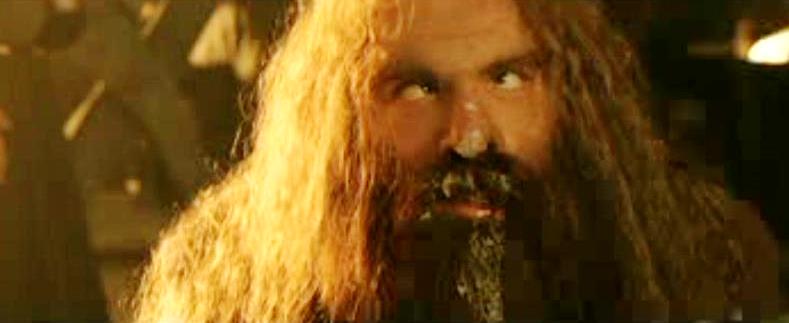

Described in the Black Light Bestiary 17th Edition as 'those fat bearded bastards,' dwarves are rarely thought well of in the Deep even in the most academic of circles. The reasons for all the dwarf-hate in Urnoct are multiple. Chief among them is the racist view dwarves take toward all other inhabitants of the stone. Dwarves recognize only their own territory treating Dark Elves, Goblins, and Trolls as mere vermin to be eradicated (in the case of goblins this assessment might be accurate). Of all the races of the Deep only the Gnomes have ever managed to retain a civil relationship with these rowdy armored pin-heads and this is only because dwarves need them to make their beloved ballistas and automatic crossbows. Shadowborn who grow up speaking the deep-speech and know not the light of day, also strain to think of dwarves as true subterraneans. Their forts often exist high in the mountains, literally above ground with turrets poking out to meet the miserable sky. They interact with humans and elves on a regular basis and even go to the trouble of ventilating their mines with 'fresh' air. They brew their alcohol with some kind of grass, instead of a sweetcaps. They design their stone work to let in the sunlight. They keep.... ponies. Despite all this antagonism, Dwarves remain a necessary evil for, absent theft and raiding, they are the only regular route for wealth to travel from the surface down. Humans and elves will not stoop to trade with the hated underfolk, but dwarves, being amoral and unscrupulous by nature, will trade with anyone, even the races they openly despise. And so the existence of the Dwarf kingdoms along the upper rim of Urnoct are tolerated, a necessary evil which keeps subterranean traders from having to suffer the glare of the accursed sun.
Ecology
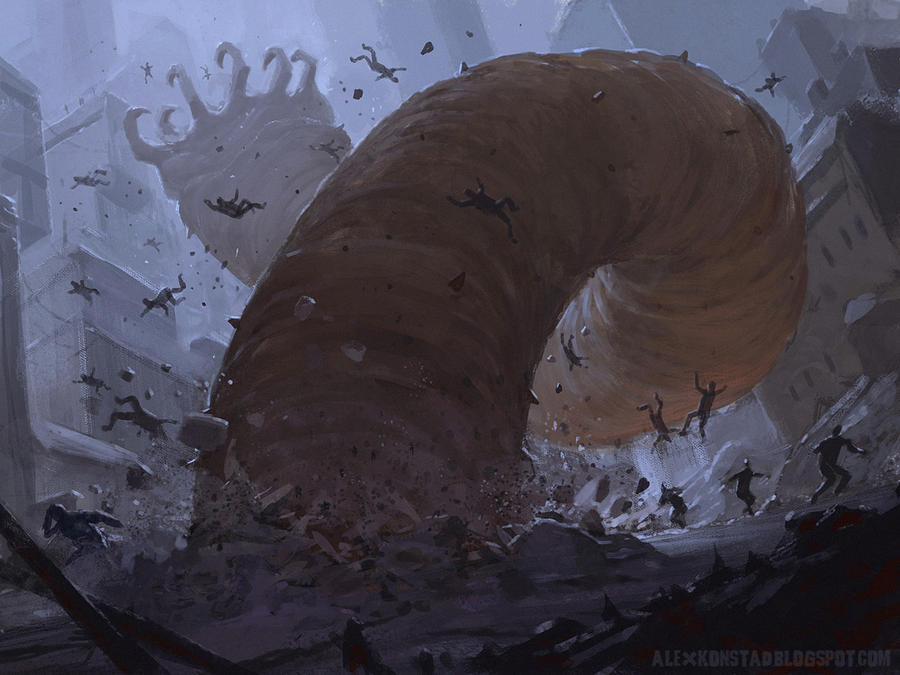

The Deep is home to its own verdant ecology. At the base of its vast and intricate food-web are the fungi. From stately mushrooms to regal truffels and lowly cave slime, fungus ultimately feeds most of Urnoct, directly or indirectly. Some fungi are even magical, drawing enchantment from mithril sediments dissolved from the bedrock. Eating such shrooms is a dangerous proposition for though they might grant a sorcerer a surge of power, madness, temporary or permanent, is sure to result.
Grazing on the Deep's diverse fungus banquet are a variety of insects, some fat and domesticated, others wild and armed with scything mandibles and poking stingers to ward off prospective hunters. A few species of blind rodents, hairless and vile creatures with mouths full of long yellow teeth also scurry about the Deep feeding on insects or the abundant mushrooms. Called skreets, they are the staple food of goblins but cause most other peoples of the Deep to vomit at the mere consideration of their consumption. At the top of the food chain are the giant bats or narloks who swoop down to carry off prey as large as gnomes. On the ground, the nightstalkers, cats with phosphorescent tails that both attract prey and illuminate them, stalk the wild places of the deep and haunt the nightmares of goblin pups. Then there are of course the wurms, monsters which prefer to eat rock, but seem to have an odd taste for wizards or any being whose blood is steeped in magic. The wurms fear only the goblin horde which, when it reaches a strength of 10,000 or more has been known to bring down adolescents.
Standing apart from the living ecology of the deep is the nonliving one. Undead from vampires to liches must struggle against their dreaded enemy, the sun, to survive on the surface, but below the shelter of soil and rock they need not fear. It's little wonder then, that so many undead seek refuge belowground. Some come to the deep by their own accord seeking shelter from sunlight and crusading clerics while others haunt the ruins they once called home, now long buried. Few of the underfolk appreciate having undead neighbors, even the Dark Elves who do not outlaw necromancy as a rule. In order to combat the threat, Clerics of the shadow Goddess Nystera prayed and received the Black Light, a twilight aura which would harm undead in the same manner as sunlight but not blind the sensitive eyes of the elves. Apart from divine magic, however, defenses against the walking dead are limited and most underfolk prefer to simply avoid them and the ruins they haunt.
Hazards

Urnoct is a far less hospitable realm than the sunny surface. In addition to the ever impending and blinding dark which threatens to swallow unwary travelers there are dangerous predators, cave ins, land slides, flash floods, whirl pools, poisonous and explosive gas build-ups, scathing geysers and swift flowing magma. Then there are the hazards not born of nature and the elements but magic and the meddling of elf, man and gnome. Prime among these is the aether sometimes called miasma. Aether is an enchanted vapor which accumulates naturally where hot water percolates through porous mithril ore. In small quantities it's harmless and humorous causing temporary cantrips, turning hair yellow or afflicting bystanders with the hiccups. Large dense clouds, however, manifest as a purple fog crackling with ultraviolet sparks of wild magic and can be deadly to any lifeforms even goblins who demonstrate remarkable resistance to more diffuse vapors. The chaotic magic issued from such clouds can cause hideous alterations in those exposed, it can animate furniture with aggressive lifefore or even rip open a portal to the worlds beyond allowing demons or worse entree into the material plane. Miasmas are almost unheard of on the surface for they are heavier than air and tend to sink. In the Deep, however, they are common and more so in recent times. Some blame the increased incidence of aetheric pollution on the Gnomes and particularly their practice of 'gracking' where they force high pressure water into the bedrock in order to produce mithril rich solutes which can be later refined into a bluish, oily and highly magical goop known as mana. Unfortunately for Trolls and others who oppose the process mana is so profitable to the Gnome Nation and so dearly sought after by wizards both above and below, that it would take a miracle to stop the industry.
Enclaves
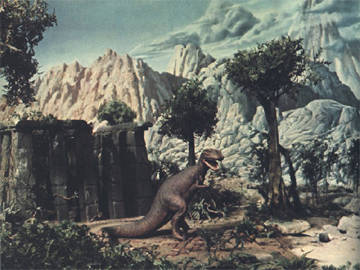

Sometimes called Lost Worlds, these sites are extremely rare, myth and conjecture in the minds of even well-traveled deepworlders. They occur when a piece of the ancient world is swallowed up and manages to perpetuate itself. Enclaves can only form in caverns known as geodomes where a roof of thaumitic crystals glows to create the equivalent of an artificial sun. Many such Lost Worlds date to a world wide calamity that occurred around 60 million years ago when the primitive ancestors of modern day dragons still dominated the surface. Entire realms were buried by the cataclysm and survive to this day as geological time capsules. The locations of Enclaves are closely guarded secrets among the explorers of the deep and extremely difficult to find. Often the island sized geodes which contain them are cracked only by a few narrow fissures requiring a talented spelunker to navigate. Lost worlds are particularly sought after by scholars who see them as unequaled reserves of ancient knowledge.
Economy
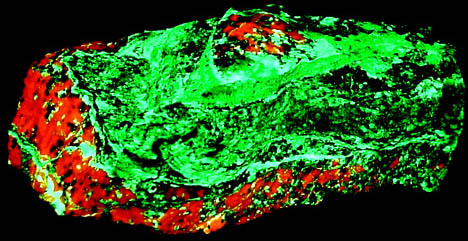

Value within the deep is measured in a variety of ways. Slaves are a common means of bartering as are coins plundered from surface kingdoms, exotic and rare mushrooms, vials of precious mana and armor quality chitin. Three currencies, however, dominate the deep and they are mithril, thaumite and the Gnomish glok, a hexaganal coin plated in corrosion resistant palladium. Mithril is traded as precious pure bars and unsmelted ore and it gains its value from its common use in enchantment and other arcane techniques. Without mithril neither magical swords nor armor, nor even the ink wizards use to transcribe their spells, could exist. It is, according to the dwarves, the very essence of magic. Thaumite, another product of the deep earth, is a translucent crystal which gleams bright when spells are cast into it and glows weakly even in the presence of magic turning the rocks which hold it phosphorescent. Capable of storing magic, it is also of vital use in enchantment, though, the Eidelon put it to a far different purpose using the crystals to store vast amounts of information. Gnomes also use thaumite extensively for it acts as a battery to power many of their mechanical craftwork. The glok, though only one of many coins changing hands in the dark, gained prominence due to the gnome's skill at trading and the presence of their shops in nearly all settlements across Urnoct.
Magic
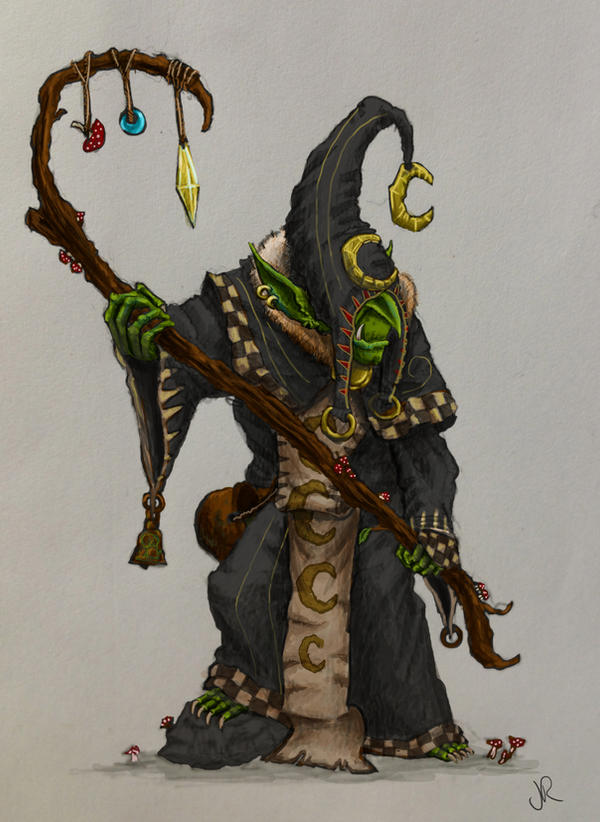

Magic always comes with a price. Thus spoke the first Archmage of Blacklight Academy and the words still ring true. All magic except for those rare gifts inborn or granted by Gods and Demons, requires a fuel, arcane components which the spell itself consumes for its casting. Generally, the more powerful the spell the more rare and expensive the components. In order to avoid fumbling about in the middle of a magical duel with newt eyes and unicorn hairs, wizards long ago invented the art of transcription whereby the power of the spell was transferred to page by means of magical inks. Modern wizards still use these methods carrying their spellbooks and scrolls with them while they leave their racks, vials and shelves of components behind in their study. Magic cast from books and scrolls flies in radiant energy first to the caster's hand and then to the intended target in a swift process that takes only as long as the spell takes to read and speak aloud. Simple yet still destructive spells like the always handy fireball might be read in a second or two while complex powerful rites might demand a lengthy string of arcane syllables. All magic requires intense study and practice except that granted by otherworldly powers. Those who receive such powers from benign deities are termed priests and clerics while those who transact oaths with demons and dark gods are termed sorcerers or diabolists.
Characters
Characters can hail from any of the listed races (including topsiders... if you dare) or if a player has an excellent idea for a new race and can resist throwing a temper tantrum if I reject it, they can propose it here for discussion and approval. Below is a character skeleton. I post it because people always ask for them, but all I'm really looking for is a creative idea which is detailed and fits the setting.
Name:
Race:
Age:
Physical Appearance:
Pic (optional):
Personality:
Motivation:
Talents:
Equipment:
Magical Items/Treasure:
Religion/Patron Diety (if applicable):
Spellbook/Scrolls (if applicable):
Magical Abilities:
History:
Allies/Pets:
I encourage players to establish preexisting relationships for having a few characters who know one another can really help the often tortuous process of group formation.
Game Structure
I think of my games as open ended stories. Yes there will be a main plot. Do I know how it will progress, no. Do I know how it will end, hell no. Everything depends on player choice and this is how I like it. I do not harry players or push them down a preordained path. In fact I make only two demands on players in terms of the story. One, they at least try to keep the group together (not always possible I understand) and two, they not completely ignore the main plot.
The game will most likely start in Black Water, the cosmopolitan center of Urnoct and the largest harbor on the undersea. However, I fully intend the story to lead our heroes to every dark corner of the underground mentioned in the intro and then some.
Last edited by a moderator:



 ) depending on interest.
) depending on interest.